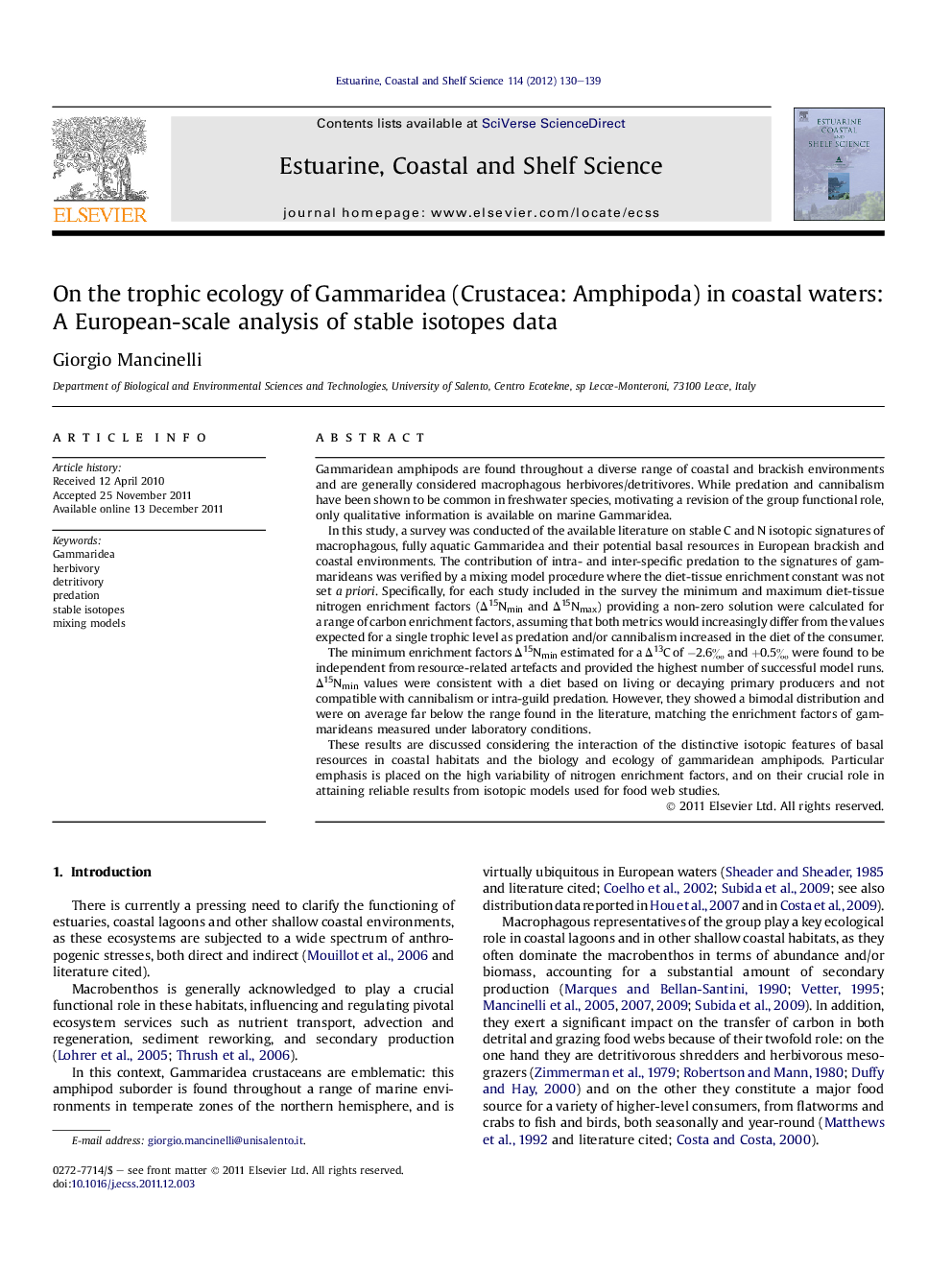| Article ID | Journal | Published Year | Pages | File Type |
|---|---|---|---|---|
| 4540034 | Estuarine, Coastal and Shelf Science | 2012 | 10 Pages |
Gammaridean amphipods are found throughout a diverse range of coastal and brackish environments and are generally considered macrophagous herbivores/detritivores. While predation and cannibalism have been shown to be common in freshwater species, motivating a revision of the group functional role, only qualitative information is available on marine Gammaridea.In this study, a survey was conducted of the available literature on stable C and N isotopic signatures of macrophagous, fully aquatic Gammaridea and their potential basal resources in European brackish and coastal environments. The contribution of intra- and inter-specific predation to the signatures of gammarideans was verified by a mixing model procedure where the diet-tissue enrichment constant was not set a priori. Specifically, for each study included in the survey the minimum and maximum diet-tissue nitrogen enrichment factors (Δ15Nmin and Δ15Nmax) providing a non-zero solution were calculated for a range of carbon enrichment factors, assuming that both metrics would increasingly differ from the values expected for a single trophic level as predation and/or cannibalism increased in the diet of the consumer.The minimum enrichment factors Δ15Nmin estimated for a Δ13C of −2.6‰ and +0.5‰ were found to be independent from resource-related artefacts and provided the highest number of successful model runs. Δ15Nmin values were consistent with a diet based on living or decaying primary producers and not compatible with cannibalism or intra-guild predation. However, they showed a bimodal distribution and were on average far below the range found in the literature, matching the enrichment factors of gammarideans measured under laboratory conditions.These results are discussed considering the interaction of the distinctive isotopic features of basal resources in coastal habitats and the biology and ecology of gammaridean amphipods. Particular emphasis is placed on the high variability of nitrogen enrichment factors, and on their crucial role in attaining reliable results from isotopic models used for food web studies.
